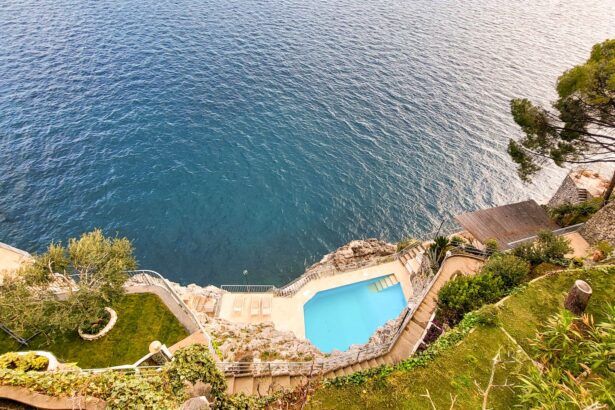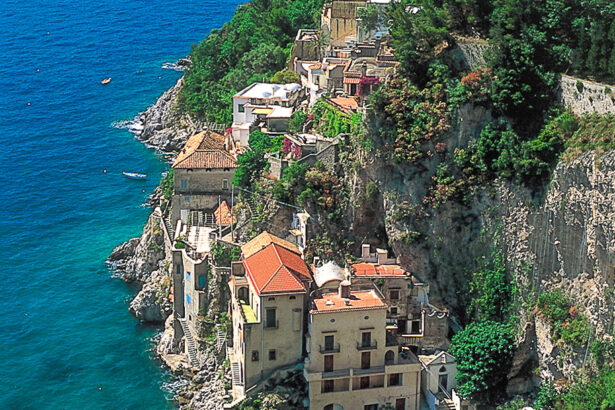The terraces cultivated with lemon and hanging cherry tomatoes , tranquility and the fresh sea breeze have made Conca Marini of the ” retreat ” for lovers of discretion and tranquility.
Picturesque and charming fishing village of Conca dei Marini, like all the other towns of the Amalfi Coast , he tied his story to the events of the ancient Maritime Republic of Amalfi: the chronicles of the time, in fact , describe the Conchesi as skilled and experienced sailors traders, being able to have , among other things, a total of 27 large galleons . Its typical houses in Mediterranean style, the vaulted ceilings and whitewashed walls , with beautiful flowered balconies and spectacular views of the sea , the terraces cultivated with lemon and hanging cherry tomatoes , tranquility and the fresh sea breeze have made Conca Marini of the ” retreat ” for lovers of discretion and tranquility. Among its patrons Princess Margaret of England, Gianni Agnelli , Jacqueline Kennedy, the Queen of Holland , Carlo Ponti and Moet & Chandon .
Among the sites of major artistic and naturalistic , we can not report :
– The Monastery of St. Rose of Lima with the Church of Santa Maria di Grado. Former Dominican monastery , built in the seventeenth century on a rocky outcrop overlooking the entire Gulf of Salerno , present the aspect of a severe, although it is rich and comfortable inside. Here, according to tradition , was built the exquisite puff Santarosa ” filled with cream and pieces of fruit . Preserved in the church is the head of St. Barnabas the Apostle , one of the most important relics of the Amalfi Coast .
– The Church of San Pancrazio , surrounded by a beautiful olive grove ( which tells often used to wander in search of inspiration , the poet Alfonso Gatto ), boasts an unparalleled view of the Faraglioni of Capri and Positano. E ‘ was mentioned for the first time in an official document of 1370 the Archbishop of Amalfi, Monsignor Marino , and was harshly sacked in 1543 so as to remain closed for a long time and forbidden .
– The Church of St. Michael the Archangel , in the green of the Mediterranean, is mentioned for the first time in a document of 1208 ;
– The Church of St. John the Baptist and Saint Anthony of Padua , of unknown origin , located on a rocky cliff . The discovery of some urns leads us to hypothesize that the building stands on the ruins of an ancient place of pagan worship ;
– The Chapel of Our Lady of the Snow, set in the rock behind the beach of Marina di Conca, protector of sailors . Legend has it that the high-relief depicting the Madonna has been found by sailors on the beach Conchesi of Constantinople, after the sacking by the Ottomans ;
– The Emerald Grotto , a karst cave discovered in 1932 , which owes its name to the emerald hue that takes on the water because of the filtered sunlight through a slit underwater ;
– The Torre del Capo di Conca , also called Saracen Tower or White Tower , an ancient watchtower century situated on a picturesque promontory jutting into the sea and surrounded by a dense Mediterranean vegetation . It was part of the defensive towers along the coast of the entire Amalfi Coast, to defend the population against pirate raids. However, after the defeat of the Turks at Lepanto, as the tower lost its original function and was used until 1949 as a burial place ( there was even one who compared it to the “towers of silence” Indian ) .
– Marina di Conca, small, picturesque cove surrounded by a group of houses facing the sea, it is not only the port where the fishing boats dock , but also the place where in the past focused the active life of the country.


